NRAO eNews
Volume Vol#, Issue Iss#
Day# Month# Year#
NRAO eNews
Volume Vol#, Issue Iss# • Day# Month# Year#

Upcoming Events

From Cells to Galaxies: Exploring the Synergies between Radio Astronomy & Medical Imaging
Sep 21 - 23, 2022 | St. Paul, MN

9th VLA Data Reduction Workshop
Oct 11 - 20, 2022 | Socorro, NM
2023 Jansky Fellowship Program
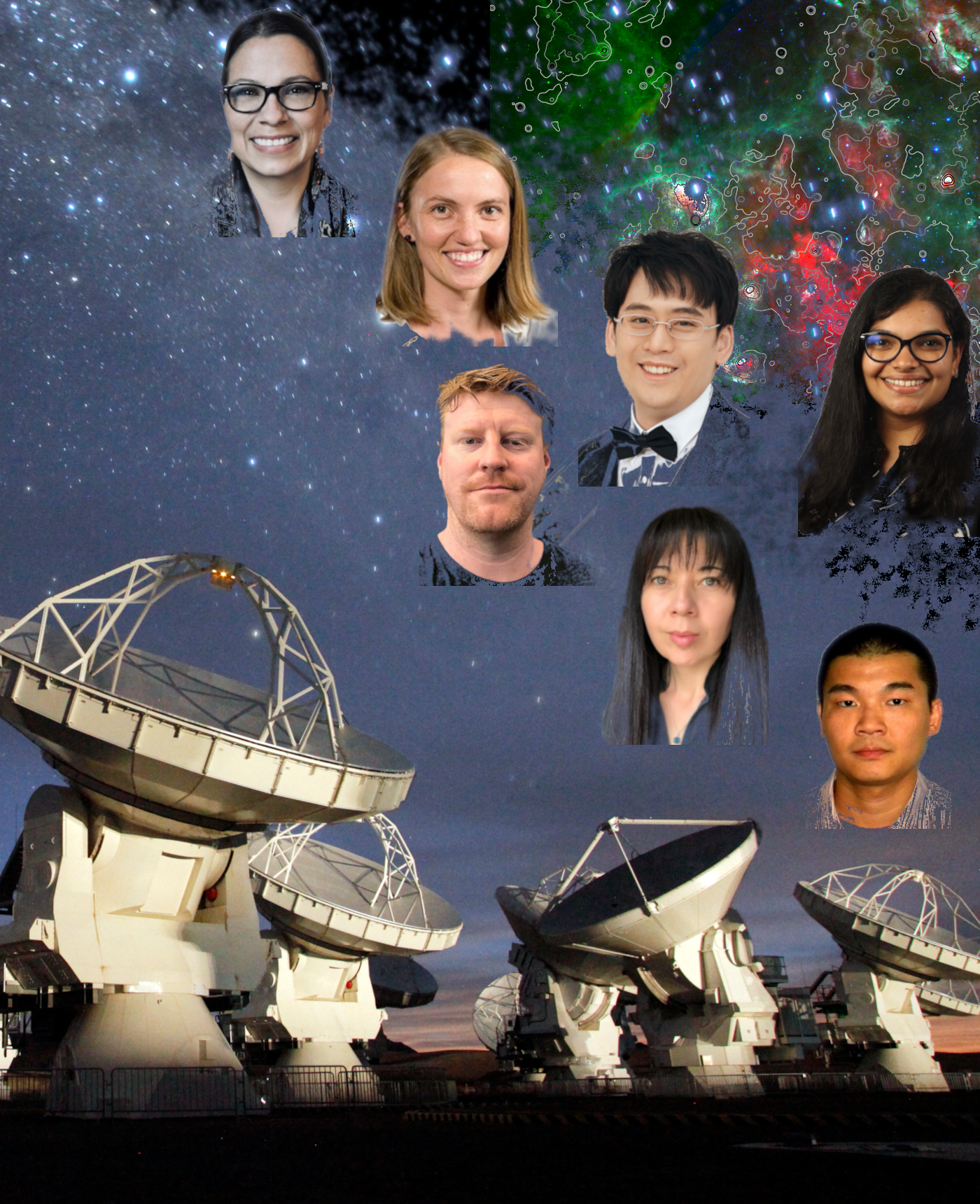
C.Padilla, NRAO/AUI/NSF [ALMA image]; Emig et al. 2022, A&A 664, 88 [Background]
[click to enlarge]
The National Radio Astronomy Observatory (NRAO) is inviting applications for the 2023 Jansky Fellowship Program! Since its inception over 60 years ago NRAO has been enabling forefront research into the Universe at radio wavelengths. In partnership with the scientific community, we provide world-leading telescopes, instrumentation, and expertise, train the next generation of scientists and engineers, advance broader, equitable, inclusive participation in science and engineering, and promote astronomy to foster a more scientifically literate society.
The NRAO Jansky Fellowship Program was established in the 1980s, and for almost four decades has been attracting exceptional researchers that moved on to eminent careers in radio astronomy and beyond. The Jansky Fellowship supports outstanding early career scientists to conduct independent research that is broadly related to the NRAO’s mission. We welcome applicants who bring innovative scientific and engineering dimensions to the Observatory and to the field of radio astronomy. Jansky Fellows spend most, if not all of their time on self-directed independent research within the NRAO scientific environment. As a Jansky Fellow, you will also have a unique opportunity to contribute to and learn from the development and delivery of the largest and most capable radio telescopes in the world. Candidates with interests in radio astronomy science and techniques, multi-wavelength collaborations, instrumentation, computation, and theory are encouraged to apply.
The submission deadline for the 2023 Jansky Fellowship Program application is Tuesday, 1 November 2022 for the fellowship appointment starting in September 2023. For details on the 2023 Jansky Fellowship Program, and on how to apply, visit the Program’s website.
ALMA Program News
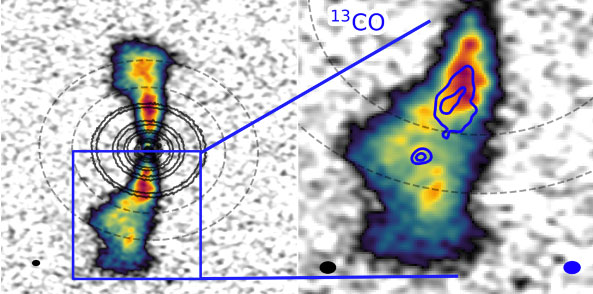
ALMA (ESO/NAOJ/NRAO), J. Bae (U. Florida)
[click to enlarge]
ALMA Status
Scientists using the Atacama Large Millimeter/submillimeter Array (ALMA) to study planet formation have made the first-ever detection of gas in a circumplanetary disk, suggesting the presence of a very young exoplanet (Bae et al: The Astrophysical Journal Letters, 934:L20).
A forming giant planet should open a radial gap in its natal protoplanetary disk in which a circumplanetary disk (CPD) may form, conserving the angular momentum of the material accreted from the circumstellar disk. Although a dust circumplanetary disk, PDS70, was seen by ALMA, gas, providing a kinematic probe of the accretion environment, had not yet been detected. The young star AS209 in Ophiuchus has a mass of 1.2M⊙, 1-2Myr age, ~140 AU size with concentric rings and gaps to 300 AU; one ~80 AU gap in 12CO at r ~ 200 AU between bright rings at 168 and 240 AU in NIR scattered light shows strong localized (both in space and velocity) perturbation on the southern side reminiscent of a so-called velocity kink induced by planets. 13CO emission shows a point source at the center of the 12CO annular gap coincident in both radius and azimuth with the localized velocity perturbations seen in 12CO, but no continuum emission, suggesting a dust mass less than 0.5 Mlunar. This is the first instance of a Circum-Planetary Disk (CPD) detection via gaseous emission, allowing us to probe the overall CPD mass kinematically as well as from emission intensity.
ALMA at 10-years: Past, Present, and Future Conference.
To commemorate its first decade of science operations, the ALMA partnership is organizing a conference in Puerto Varas, Chile on 4-8 December 2023 that will take a look back at the Observatory’s accomplishments, highlight its latest results, and look forward to future technical developments. The first decade of ALMA has led to many exciting discoveries and 2900+ publications. As ALMA starts its second decade of operations, it is implementing an ambitious development roadmap that will ultimately quadruple the system bandwidth and vastly improve ALMA's observing efficiency for continuum and spectral line science.
This conference will include invited and contributed talks, and poster presentations. A hybrid format will allow participants to choose to attend in-person or remotely on a virtual platform. Talks and posters are welcome in all fields of astronomy, from cosmology and galaxies in the distant Universe to nearby galaxies and the Galactic Center, interstellar medium, and star formation in our Galaxy, as well as astrochemistry, circumstellar disks, exoplanets, Solar System, stellar evolution, and the Sun.
More information on the conference will be posted on the conference website as it becomes available. Registration will open in early 2023.
American Astronomical Society (AAS) Meeting Special Session: ALMA Status and Plans for Increased Capability
A Special Session titled ALMA Status and Plans for Increased Capability has been accepted for the 8-12 January 2023 meeting of the American Astronomical Society (AAS) meeting in Seattle, Washington (exact Session date and time still TBD). This Session will describe for the membership ALMA news, capabilities, and expectations for ALMA performance and science in the next few years, and plans for its upgrade in the 2030 timeframe. In that period, ALMA will complete its frequency coverage of the millimeter window. ALMA's bandwidth will be increased to enhance continuum sensitivity even as its line sensitivity is increased via receiver upgrades, an upgraded correlator and upgrades of the systems connecting them. Higher resolution imaging is being explored, both on the exceptional site and as part of the extremely long baseline imaging arrays. The Special Session will feature science talks presenting a wide range of recent, exciting ALMA results and will highlight the support available to the community from the North American ALMA Science Center (NAASC) at the NRAO.
Cycle 8 Science Operations
ALMA has moved to its current C3 from the C4 Cycle 8 configuration as scheduled in late August, contracting towards more compact configurations to begin Cycle 9. Weather has been generally good with daily subfreezing temperatures and occasional wind and/or snow as is normal for mid to late winter.
NAASC Staff Transitions
Over the past weeks and months, several new staff members have joined the NAASC. Natalie Butterfield, Andy Lipnicky, Marcel Neeleman and Patrick Sheehan have joined the NAASC scientific staff. Holly Sheets and Michael Sánchez have joined the Data Analyst team. Another Data Analyst, Evan Smith, will join the NAASC in early October.
Catherine Vlahakis became the new manager of the North American ALMA Regional Center (ARC) effective 15 August, 2022, taking over from Anthony Remijan.
ALMA Ambassadors
Applications for the 2023 ALMA Ambassadors program are now open. Graduate students, postdocs, and early career researchers are eligible to participate in leading ALMA proposal preparation and data processing training events for the North American community. Please send a completed application form and a CV to naascrec@nrao.edu no later than 15 October 2022, 5 p.m. Eastern Time.
ALMA–JWST Synergy
As the James Webb Space Telescope (JWST) commences science, excitement over early results has continued with appreciation of its synergy with ALMA. Perusal of the high priority projects list shows considerable interest in ALMA Director’s Discretionary Time observations since JWST began producing data. At press time, seven approved projects are listed in the queue spanning 11 project numbers thus far, and five are JWST-related observations.
New North American ALMA Regional Center Manager
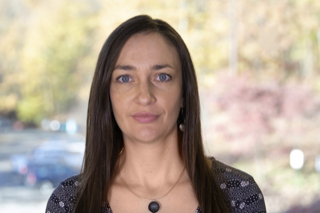
Dr. Catherine Vlahakis
We are pleased to announce the appointment of Catherine Vlahakis as the new North American ALMA Regional Center (NA ARC) Manager and Division Head, effective Monday, 15 August 2022. Catherine had been serving as the Interim NA ARC Manager since 23 May 2022, when Anthony Remijan departed to become the new NRAO Assistant Director of Science Support and Research.
Catherine comes to these roles with over ten years of leadership experience in ALMA and NRAO that include Deputy Program Scientist for the Extension of Capabilities (EOC) team in Chile and leadership of the 2014 Long Baseline Campaign; Lead for the North American ALMA Science Center (NAASC) Telescope Interface and Diagnostics Team; and Deputy NA ARC Manager.
As NA ARC Manager, Catherine is responsible for the North American support and deliverables to the Joint ALMA Observatory and NA community, as specified under the ALMA agreements, and is the NA representative on the ALMA Integrated Science Operations Team (ISOpT). As NA ARC Division Head, Catherine has additional management responsibilities within the NAASC.
Finally, we extend our gratitude to Anthony Remijan for his years of service to ALMA and the NAASC. Tony was one of the founding members of the NAASC, served as the NA ARC Manager since 2015 and as NAASC Head since 2018, and has held many other key roles within NRAO and ALMA. We are indebted to Tony for his contributions to ALMA, and congratulate him on his new appointment.
ALMA Ambassadors Data Processing/Analysis Workshops
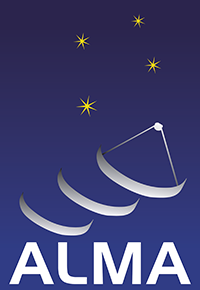
The North American ALMA Science Center (NAASC) and the Cycle 9 ALMA Ambassadors have organized a series of workshops on the processing and analysis of ALMA data. These workshops will take place in September and October 2022. The goal of these events is to train users on basic data processing and analysis techniques that they may need to use ALMA for scientific discovery. Topics may include:
- Imaging/cleaning of continuum and spectral line observations
- Self-calibration
- Imaging of data from multiple array configurations
- Using the Pipeline Weblog and Re-running the Imaging Pipeline
- Using CARTA for Image Visualization and Analysis
- Science-ready Data Products
- What's New in CASA (Common Astronomy Software Applications)
- The ALMA Press Release Process
Information on the locations and dates for these workshops is available on the NAASC Community Events webpage and in the table below. Early registration is encouraged to facilitate tailoring the workshops to the interests of the attendees.
| Ambassador | Locations | Date |
|---|---|---|
| Allison Towner | Univ Florida | 28 & 30 September 2022 |
| Fengwu Sun | Univ Arizona | 5 October 2022 |
| Hansung Gim | Montana State Univ | 11 October 2022 |
| Nathan Roth | Univ of Maryland | 18 October 2022 |
| Charles Law | Harvard/CfA | 26 October 2022 |
| Hayley Roberts | Univ Colorado | 26 October 2022 |
| Tarraneh Eftekhari | Northwestern Univ | 28 October 2022 |
| Wren Suess | Stanford or UC Santa Cruz (TBD) | TBD |
ALMA Post Doc Fellowships
The Joint ALMA Observatory is offering postdoctoral fellowship positions to join the ALMA science operations group in Santiago, Chile. ALMA Postdoctoral Fellows will be appointed for a period of three years and will spend 50% of their time dedicated to their personal scientific research. The remaining time will be spent in support of ALMA operations, including observing at the ALMA Operations Support Facility (OSF) near San Pedro de Atacama for hands-on interaction with the telescope. The goal of these fellowships is to offer early career scientists the opportunity to enhance their research programs through involvement in science activities and interactions with experienced staff at the world's foremost observatory for sub-mm astronomy.
Details of the application process and information about conditions and remuneration are provided in the Recruitment Portals of the ALMA partners:
- Applicants submitting their candidacy to AUI/NRAO are invited to submit for consideration at the AUI/NRAO careers page, https://careers.nrao.edu. Reference letters must be sent by electronic mail to resumes@nrao.edu.
- Applicants submitting their application to ESO are invited to apply online at https://jobs.eso.org/.
- Applicants submitting their application to NAOJ are invited to apply via e-mail to apply-alma-JAOFellow20191216@alma.mtk.nao.ac.jp
Deadline for receipt of applications is 31 October 2022.
ngVLA Project News
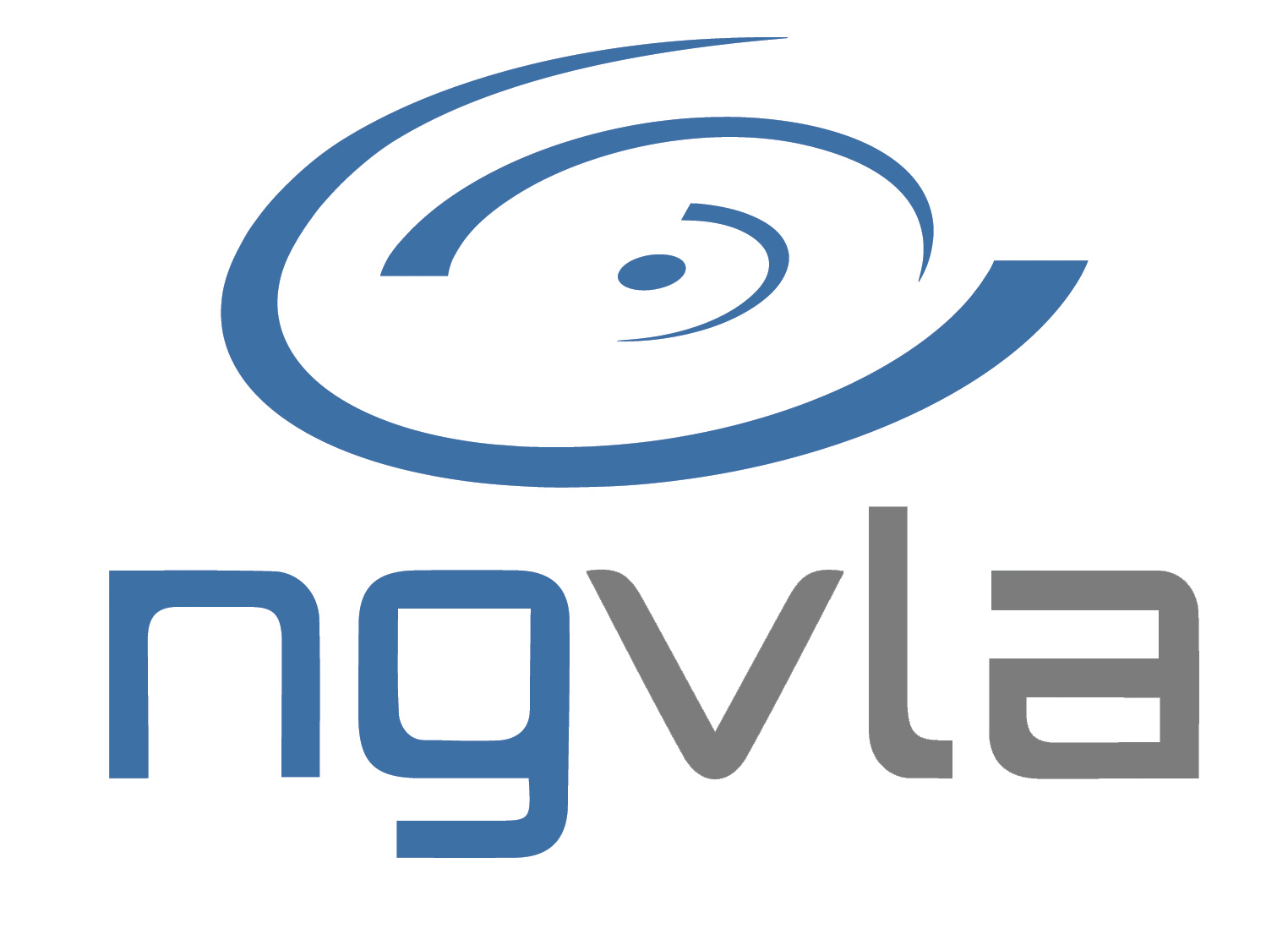
ngVLA Special Session: Chemical Probes of Astrophysical Systems
The NRAO and the ngVLA Project will convene a Special Session titled "Chemical Probes of Astrophysical Systems" at the January 2023 American Astronomical Society meeting in Seattle, WA.
The Session will highlight recent scientific breakthroughs in astrochemistry enabled by current investigations using large optical/IR, (sub-) millimeter, and radio facilities; describe planned near- and long-term improvements for ground- and space-based facilities; discuss major scientific leaps likely to result from next-generation facilities across the electromagnetic spectrum; and review the highest-priority themes in the field of astrochemistry that will be accomplished by the state-of-the-art observatories that will be commissioned in the next decade.
Invited presentations by Eliza Kempton (UMD), Brett McGuire (MIT), David Meier (NMT), Stefanie Milam (GSFC), Dominique Segura-Cox (MPE), and Kamber Schwarz (MPIA) are featured. Contributed iPoster presentations are welcomed. Additional information will be available soon.
ngVLA Site Selection Begins in Mexico
NRAO is supporting a Mexican astronomer's work to select and develop antenna sites in northern Mexico for the Next Generation Very Large Array (ngVLA). See the press release for details.
Line Observations of Massive Star-forming Clouds
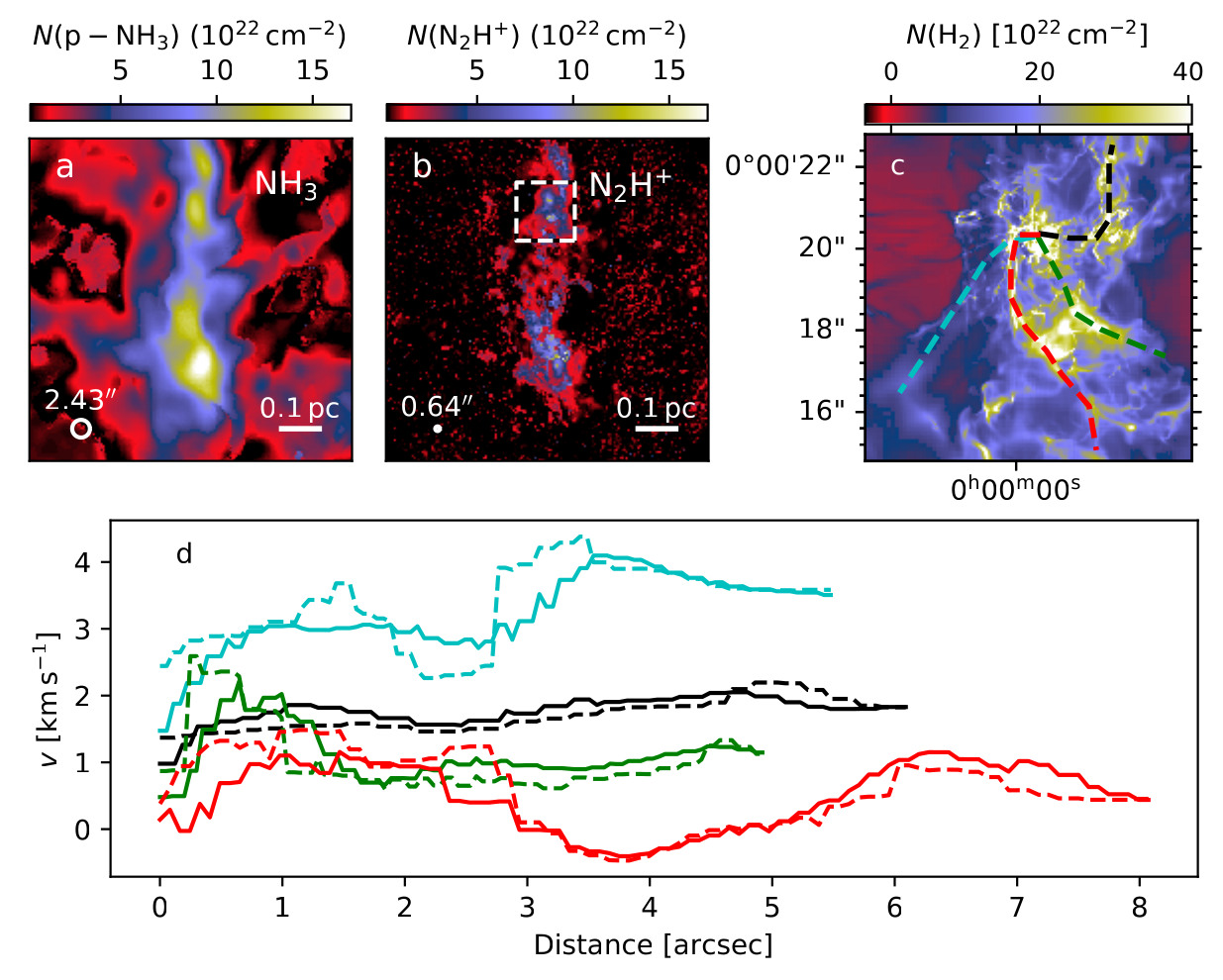
[frames a-b] NH3 and N2H+ column density maps based on synthetic ngVLA observations. [frame-c] Cloud structure for a smaller area (dashed box, frame-b) and the full model resolution. [frame-d] Radial velocity measurements along the paths indicated in frame-c obtained with ideal observations (solid lines) and with simulated ngVLA H13CO+ observations (dashed lines).
[click to enlarge]
Because of high column densities and general complexity, high-mass star-forming regions are challenging targets. Spectral line observations of high sensitivity, and high angular and velocity resolution are needed to measure their density and velocity fields and to determine how the gas is transported to hubs, where the most massive stars are formed.
Juvela et al. (2022) used synthetic observations to investigate how observations, especially with the next generation Very Large Array (ngVLA), can be used in studies of massive infrared dark clouds (IRDCs). For a 4 kpc cloud distance, the ngVLA provides a resolution of 0.01 pc even in its most compact configuration, allowing one to map gas motions from cloud scales to individual cores (see figure). For abundant molecules, such as HCO+, NH3, N2H+, and CO isotopomers, the modelled IRDC could be mapped with high sensitivity and sub-arcsecond resolution in just a few hours. NH3 observations provided reliable estimates of the column density and kinetic temperature directly for the entire cloud. The total column density could be measured accurately also at higher frequencies, when the observations were complemented with single-dish data.
The comparison between ideal observations, synthetic ngVLA observations, and the real 3D model showed that the ngVLA will provide accurate measurements for many key molecules. The main challenges are in the interpretation of the complex data that reflect a mixture of different physical conditions along the line of sight.
Since 2015 the acronym ngVLA has appeared in 850+ publications indexed in the SAO/NASA Astrophysics Data System. This article continues a regular feature intended to showcase some of those publications. We are especially interested in showcasing work done by early-career researchers. The collection of showcase articles can be viewed online. Anyone wishing to volunteer to author a feature should contact Joan Wrobel.
CARTA Version 3.0 Released
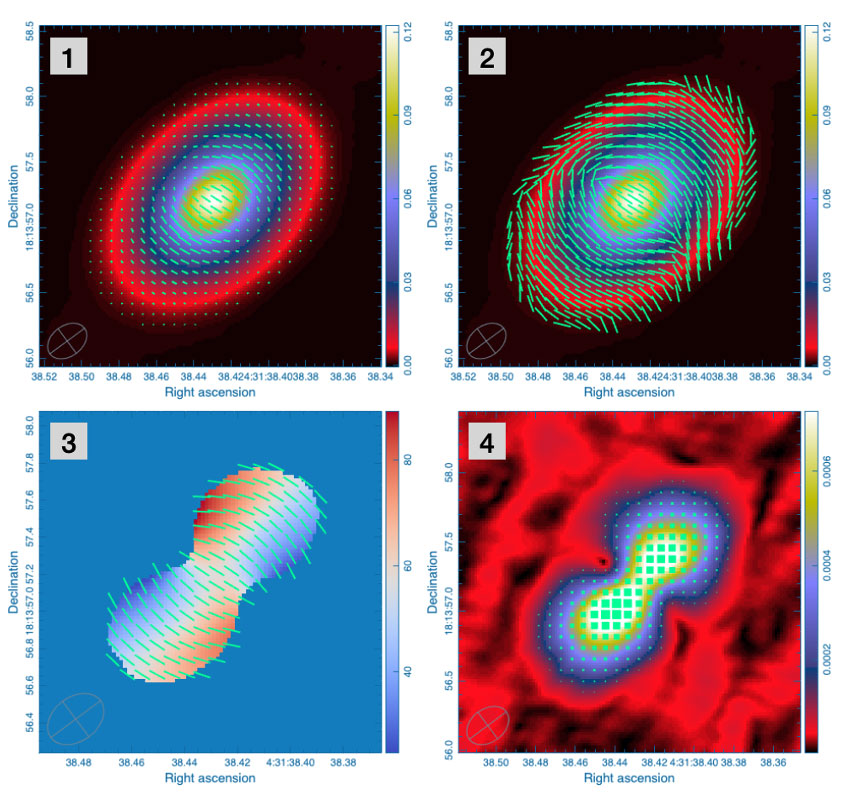
CARTA Vector Field Rendering example
[click to enlarge]
The Cube Analysis and Rendering Tool for Astronomy (CARTA) is an image visualization and analysis tool designed for the ALMA, the VLA, and the SKA pathfinders, MeerKAT and ASKAP. CARTA’s mission is to provide usability and scalability for the future by utilizing modern web technologies and computing parallelization. The NRAO has been involved since the early days in the molding of CARTA to be a replacement for the CASA viewer, and this release moves a substantial way towards that objective, as well as introducing many new features (see below).
The development of the CARTA project is a joint effort from (in alphabetical order): Academia Sinica, Institute of Astronomy and Astrophysics (ASIAA), the Inter-university Institute for Data Intensive Astronomy (IDIA), the National Radio Astronomy Observatory (NRAO), and the Department of Physics, University of Alberta.
A new version of CARTA, v3.0, was released on 23 August 2022 and is available for download. The document CARTA Feature Highlights describes the new features in detail, with accompanying images.
The main new features are:
- Package support for x86_64 and aarch64 architectures
- Vector overlay rendering
- Loading images with the Lattice Expression Language (LEL)
- Loading CASA images with pixel values as complex numbers
- Initial implementation of image 2D Gaussian fitting
- Generating computed polarization quantities (e.g., linear polarization intensity) of a Stokes cube on the fly
- Setting a new rest frequency when saving a subimage
- Logging moment map generation information in header history
- Line and polyline region spectral profiler
- Initial implementation of PV image generator
- Image file list filter
- High-resolution PNG export
- Enhanced spectral matching mode
- Custom rest frequency for velocity conversion
- Performance boost when loading a region file with massive amount of regions
- Telemetry
- Online catalog query from SIMBAD and VizieR
- Region export and import enhancement
- Initial implementation of intensity unit conversion
- Multiple panel view
- Pixel grid border rendering at high zoom levels
- Interactive raster rendering with a cutoff via the interactive colorbar
- Distance measuring tool
- Spatial profiler widget enhancement
- Histogram and statistics widget enhancement
- Cursor info widget
- Code snippets (experimental feature)
- Support gzipped FITS images (fits.gz and fz)
- HDF5 mip map support
- Remember last used directory
Performance enhancement and bug fixes are included.
VLA Pipeline Bug Affecting Flux Density Scale of Multi-band Observations
We recently uncovered a software bug that can affect the flux density scale of multi-band data calibrated by the Very Large Array (VLA) pipeline. This issue is present specifically for datasets where the fitorder used in the hifv_fluxboot/hifv_fluxboot2 tasks was greater than 2. If your data set was single-band, or the fit order in your multi-band data set was less than or equal to 2, your calibrated data are not impacted by this bug. We emphasize that this bug is in the pipeline and not in CASA itself; manually calibrated data are not impacted by it.
The bug is present in pipeline-processed data using CASA 6.1.2 (pipeline version 2020.1.0.36) and CASA 6.2.1 (pipeline version 2021.2.0.128). These CASA versions were in use at NRAO from 10 December 2020 to September 2022.
More information and examples of the bug are shown on the webpage. A fix for this bug will be available in the next CASA+pipeline release, which will be released in late September 2022. We will be reprocessing the affected data as resources allow and re-ingesting the fixed calibrations into the archive. Users requiring fixed data on a shorter timescale will have the ability to reprocess their data as soon as the new CASA+pipeline package is available. Manual processing of data (without using the pipeline or its tasks) is not affected by this bug. Users are encouraged to contact the NRAO helpdesk if they have further questions about this bug, require more information, and/or need help to assess the severity of the bug's impact on their data.
Engineer Joins Advanced Spectrum Monitor (ASM) Team
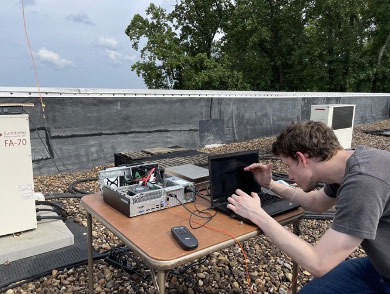
David Bordenave on the roof of the CDL, testing the Signal Hound spectrum analyzer that will be part of the ASM.
[click to enlarge]
Engineer David Bordenave joined the National Radio Dynamic Zone (NRDZ) project in July 2022. He has already made valuable contributions to the design of the Advanced Spectrum Monitor (ASM) enclosure and the ASM control software.
David grew up overseas in Germany and Japan, and received his B.S. in Comprehensive Physics and Astronomy from the University of Washington, Seattle. He received his M.S. and is currently a Ph.D. candidate in Astronomy at University of Virginia, Charlottesville, where he was an NRAO Grote Reber Doctoral Fellow at the Central Development Laboratory. David’s thesis research focuses on low-frequency radio instrumentation for precision measurements, correlation receivers, and absolute calibration and modeling of Radio Frequency systems, and he is working on a custom built Green Bank Telescope receiver to create an absolutely calibrated 310 MHz sky map of the Northern Hemisphere to measure the Radio Synchrotron Background. David joins Kevin Shoemaker, who has been lead engineer for the ASM since October 2021.
NRAO’s Gurton Receives Astronomical Society of the Pacific Award
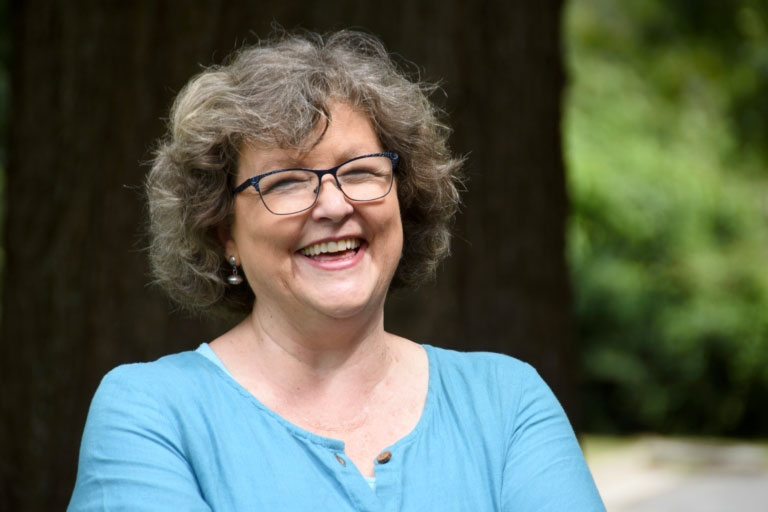
The Astronomical Society of the Pacific (ASP) has given its prestigious Klumpke-Roberts Award for 2022 to Suzanne (Suzy) Gurton, Assistant Director for Education and Public Outreach of the NSF’s National Radio Astronomy Observatory (NRAO). The Klumpke-Roberts award honors those who have made outstanding contributions to the public understanding and appreciation of astronomy.
The award recognizes Gurton’s “almost 40 years of leading, organizing, developing, and training educators for astronomy outreach programs that have become permanent fixtures in the outreach community, lasting long beyond her involvement,” according to the ASP’s announcement.
“We’re very proud to see Suzy’s dedication and leadership in astronomy education and outreach receive this well-deserved recognition,” said NRAO Director Tony Beasley. “We’re also very happy that she has brought that dedication and her wealth of expertise to leading our observatory’s programs aimed at the public and educators,” he added.
At NRAO, Gurton leads a team of writers, educators, artists and animators who bring the excitement of astronomy to students, educators, and the public through the news media, formal and informal education programs, the Very Large Array Visitor Center, and social media. Since joining NRAO in 2016, she has led a significant expansion of the observatory’s outreach and educational programs, raising the observatory’s public profile and its impact on science education.
Gurton’s career includes working at planetariums, including Morehead Planetarium at the University of North Carolina, the University of Colorado, and as Director of the Santa Fe Community College planetarium. She also was an astronomy lecturer at the Griffith Observatory in Los Angeles, and a writer/producer at the American Museum of Natural History in New York City.
From 2000 to 2016, she was Director of Education at ASP, where she oversaw that organization’s science education programs, including Family ASTRO, Astronomy from the Ground Up, and Night Sky Network. She also edited ASP’s newsletter for teachers, Universe in the Classroom.
Her work has included not only presenting astronomy to the public herself, but also teaching both amateur and professional astronomers how to effectively engage with the general public and students. She was a lead educator in the American Astronomical Society’s Astronomy Ambassadors program, aimed at training early career astronomers in public outreach.
Recent Media Releases
Frank Drake (1930-2022)

Frank Drake
[click to enlarge]
Frank Drake, one of the first scientists to come to the NRAO, died at his home in Aptos, California on September 2. After receiving his PhD from Harvard, Frank joined the NRAO in 1958. Using the new 85-foot radio telescope in Green Bank to study radio emission from planets, he observed the remarkably high temperature on the surface of Venus due to the greenhouse effect and then the non-thermal radiation from Jupiter which he correctly suggested was due to Van Allen type radiation belts. During his time in Green Bank, Frank initiated Project Ozma, the first serious and scientific search for signs of extraterrestrial life, and developed the famous and now-eponymous Drake equation.
Frank left NRAO in 1963 for JPL and in 1966 he became the Director of the Cornell Arecibo Observatory and then the National Atmospheric and Ionospheric Center. During his fifteen years at Cornell, Frank led the Arecibo program to study the newly discovered pulsars, and together with Carl Sagan initiated a broad program to search for extraterrestrial intelligent life. In the 1970s he developed and transmitted the famous Arecibo message and, in collaboration with Sagan and others, was responsible for the Pioneer plaques and the Voyager Golden Records. After leaving Cornell in 1984, Frank joined the University of California at Santa Cruz as Dean of Natural Sciences and became the first President of the brand-new SETI Institute. He will be remembered for his pioneering work in planetary radio astronomy, his kind and supportive mentoring of young scientists, his good-hearted and jovial nature, and as the pioneer and spokesman for the burgeoning searches for extraterrestrial intelligent life.
From the Archives
Ellen Bouton

[click to enlarge]
About this month's photo: On 22 September 1975, Associated Universities, Inc. accepted Very Large Array Antenna No. 1 from E-Systems, and also accepted Transporter No. 1 (later renamed Hein's Trein). In this photo from 18 July 1975, the transporter has moved Antenna 1 from the assembly building to set it on the master foundation for final alignment and electronics installation. On 24 October 1975 Antenna 1 made its first observations, of Virgo A at 6 cm and of Venus and 3C273 at 1.3 cm.
From the Archives is an ongoing series illustrating NRAO and U.S. radio astronomy history via images selected from our collections of individuals' and institutional papers. If readers have images they believe would be of interest to the Archives, please contact Ellen Bouton.

